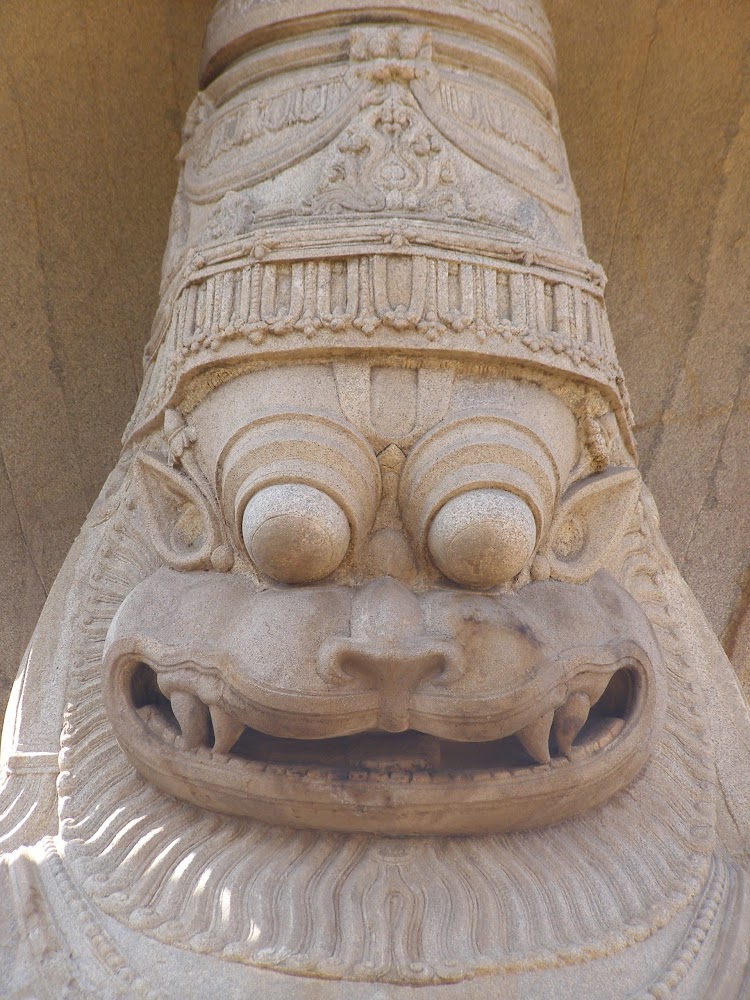
The Lakshmi Narasimha Idol at Krishnapura (Hampi)
The Lakshmi Narasimha idol is the largest monolith statue in Hampi. The idol is located on the southern side of the Hemakuta group of temples that stand on the Hemakuta Hill.
(A thread)



The Lakshmi Narasimha idol is the largest monolith statue in Hampi. The idol is located on the southern side of the Hemakuta group of temples that stand on the Hemakuta Hill.
(A thread)




The Lakshmi Narasimha idol and the temple housing it was built in 1528 during the reign of Krishnadeva Raya of Vijayanagara empire. The Lakshmi Narasimha temple is dedicated to lord Narasimha, one of the ten avatars of lord Vishnu, and goddess Lakshmi.(1)
The original sculpture had a small figure of goddess Lakshmi, consort of lord Narasimha, sitting on his lap. The idol was vandalized and mutilated in 1565 during a raid by Deccan Sultanate which led to the fall of Vijayanagara empire.(2)
The limbs of Narasimha’s idol were broken. The figure of Lakshmi was separated from that of Narasimha. In the process of mutilation, one of the hands of goddess Lakshmi was broken and the broken hand of the goddess can be seen resting on the back of Narasimha.(3)
The Lakshmi Narasimha idol has a height of 6.7 metres. The form has a finely chiselled broad chest and a well defined mane. God Narasimha adorns a headgear, seated in a cross legged position. The sculpture portrays god Narasimha sitting on the coils of Adishesha.(4)
Adishesha, the king of snakes rises behind him with his seven hoods. The hoods have been designed to serve as a canopy over god Narasimha’s head. The sculpture is set within an arch. There is a lion mask set above the hoods of Adishesha.(5)
The most striking feature of the idol are the bulging eyes of god Narasimha. It is important to note that such a huge sculpture was crafted from a single boulder of granite.(6)
There are two theories about the form of Narasimha portrayed through the idol. One suggests that the statue represents the Ugra Narasimha form. The reason stated is that the statue has a fierce appearance, expressed through the protruding eyes and the scary facial expression.(7)
The 2nd theory suggests that the statue represents Malola Narasimha form. The reason being god Narasimha is seen with his consort Lakshmi seated on his lap (though the figure is damaged). Malola is a combination of "Ma" meaning goddess Lakshmi and "Lola" meaning beloved.(8)
• • •
Missing some Tweet in this thread? You can try to
force a refresh












